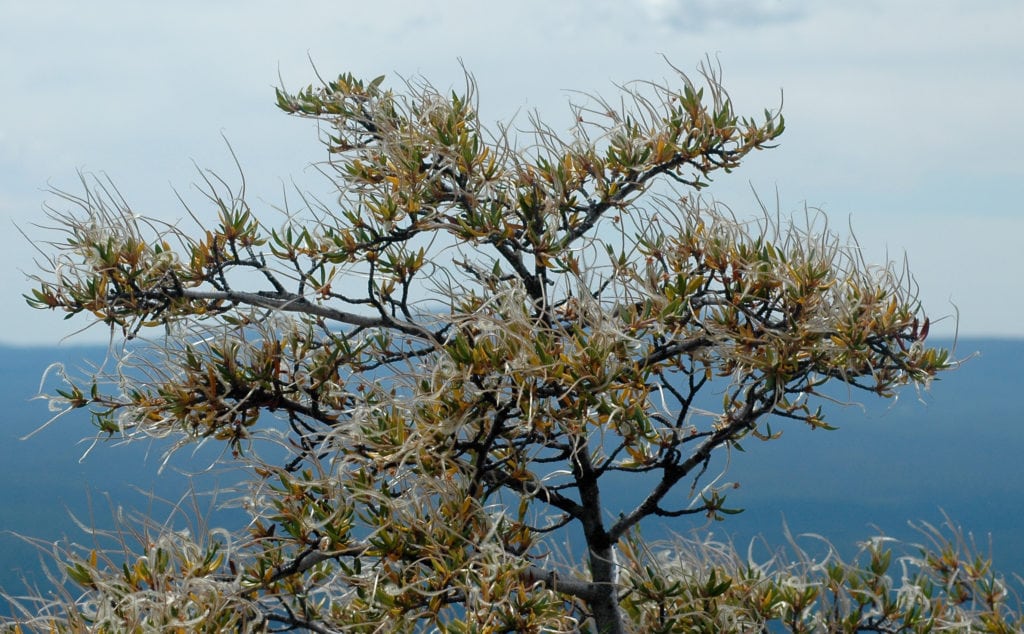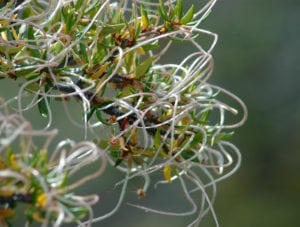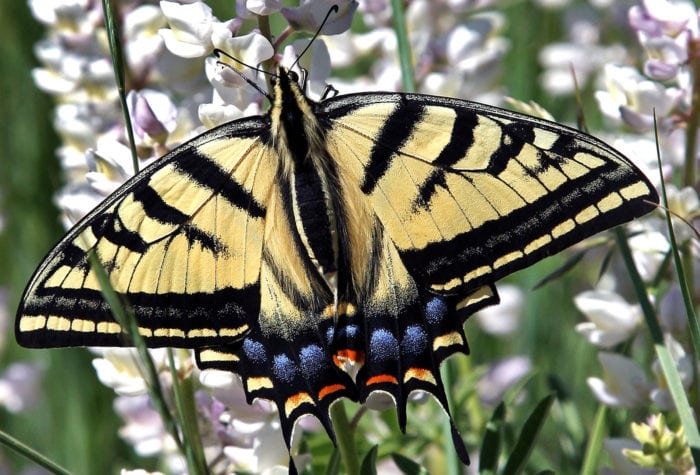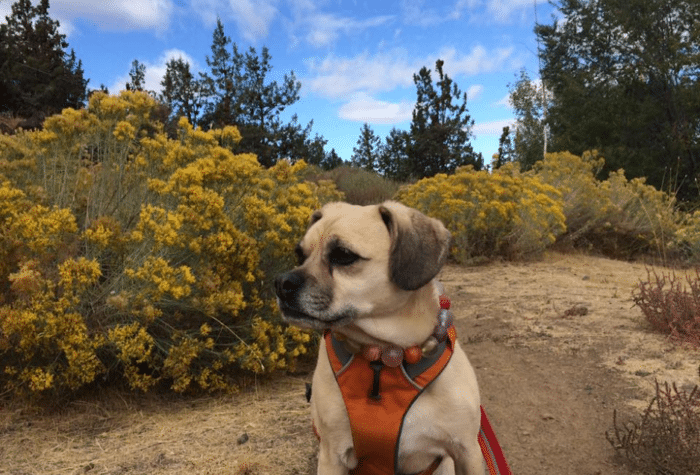By LeeAnn Kriegh
Trees live their lives on a different timescale than ours, so it helps to slow ourselves down to fully appreciate them. Certainly, a shrubby little tree like curlleaf mountain-mahogany (Cercocarpus ledifolius) isn’t going to catch our eye if we’re racing past along the trail. But take time for a closer look, and you’ll probably be adding this one to your list of favorite trees in Central Oregon.

On the topic of timescales, consider that few of us will celebrate our 100th birthday, while at that age the slow-growing mountain-mahogany has barely begun. The tree doesn’t reach its full height until about the century mark, and from there it can go on living for at least another 1,200 years. Such a long lifespan is especially remarkable given that the tree grows in some of our most inhospitable conditions: at elevation, often in drought conditions, and on highly exposed rocky ridges and buttes.
One key to the mountain-mahogany’s long life is that it’s a nitrogen fixer like peas and alders, which means that at least some individuals have bacteria-filled nodules on their roots that convert nitrogen into a usable, water-soluble form—basically, they manufacture their own fertilizer. That can help the trees survive harsh growing conditions, and it’s also been shown to support the growth and vitality of the grasses and wildflowers that grow near them.
But let’s get back to us out on the trail, slowing down to appreciate mountain-mahogany. If it’s spring, stop first and listen for the hum of activity. Although the tree is mostly pollinated by the wind, it’s also popular with a host of buzzing pollinators, including lots of native bees.
Step even closer to smell the tiny whitish-yellow trumpet flowers—they offer up one of the sweetest aromas you’ll find on any of our native trees or shrubs. You can also see the stamens (male reproductive parts) sticking out well past the petals, like tiny arms with fistfuls of pollen that they’re offering to the wind.
On warm summer days, scoop up and crush a handful of the inches-deep drifts of orange and rust-colored leaves that have fallen under the trees, and inhale deeply. Sometimes the leaves are too old or dried out and you won’t smell much, but oh, when you get it just right—it’s such a joy to discover a new scent, rather like a sweet tobacco, in an unexpected place, from a tree that few people even notice.

Late summer is the best time for simply looking at mountain-mahoganies because they’ll be covered in seeds with one- to three-inch curly white tails trailing behind (the genus name, Cercocarpus, means “tailed fruit”). When the wind blows a seed from the tree, the feathery streamer helps it fly a little farther. Eventually, the seed settles on the ground, with the streamer still attached and spiraled like a pig’s tail. When it rains or gets humid enough, the spiral unwinds, effectively drilling the seed into the ground so it can germinate in the spring.
You can test this amazing process for yourself: Wet one of the wispy streamers and place it in your palm, then watch as it slowly straightens before your eyes.
To see (and smell and touch and listen to) curlleaf mountain-mahogany, head to Pine Mountain, the Dry River Canyon, or lots of other public lands that ONDA is working to protect, defend, and restore such as Steens Mountain and the Greater Hart-Sheldon region.
 About the author
About the author
LeeAnn Kriegh is a Bend-based writer and author of The Nature of Bend, a fun, full-color guide to the most common plants and animals in Central Oregon.


